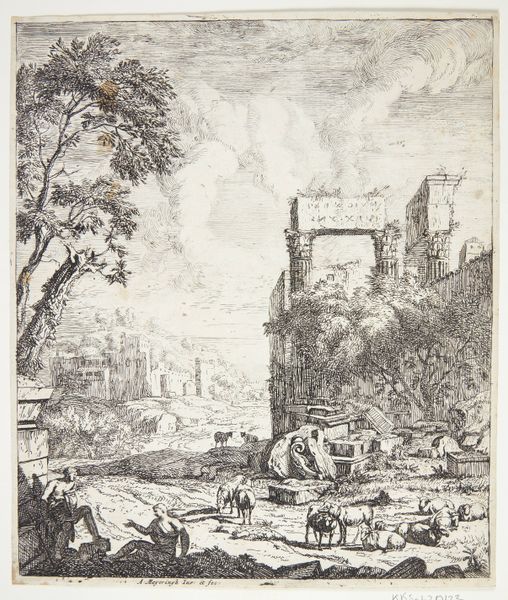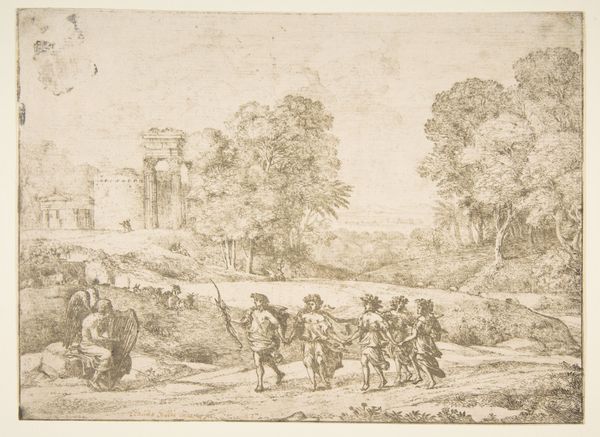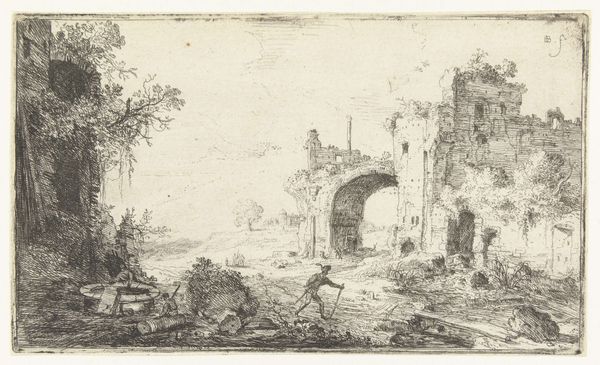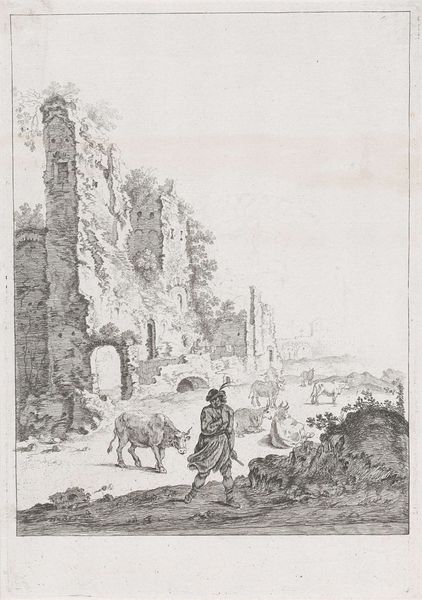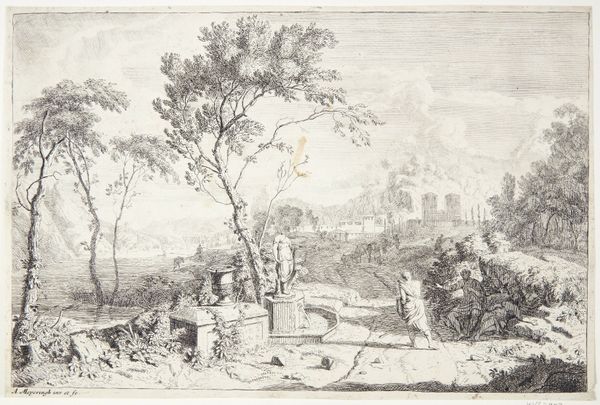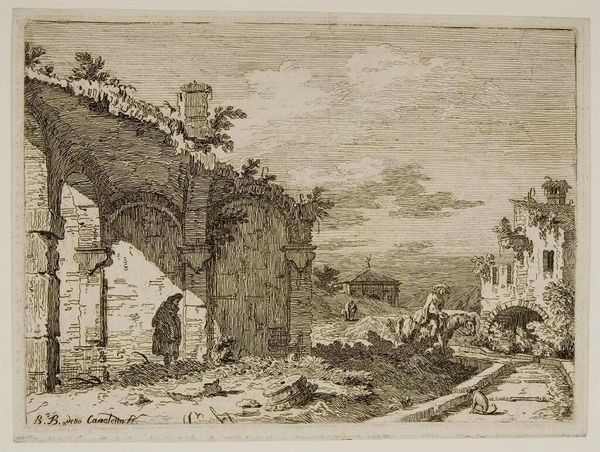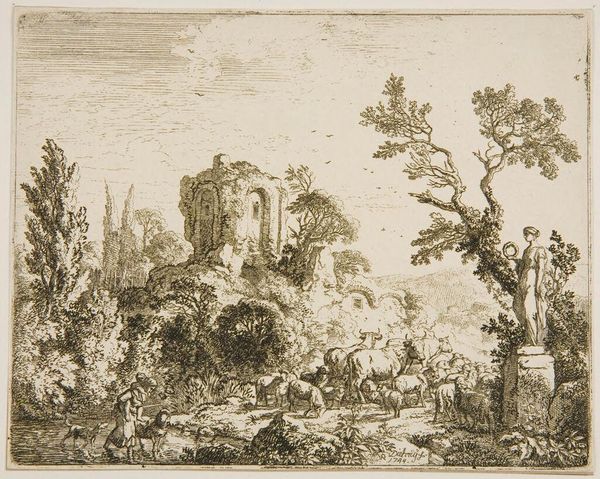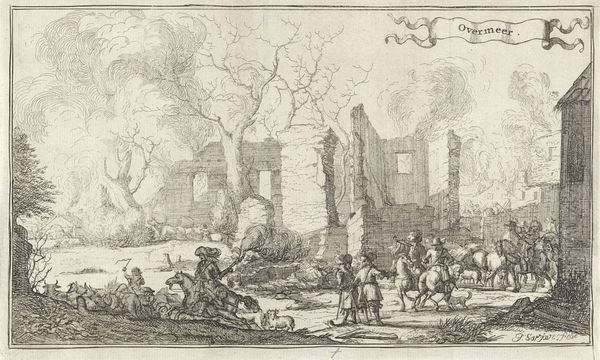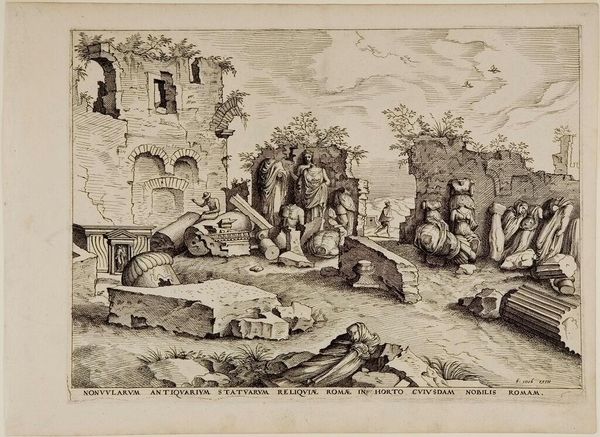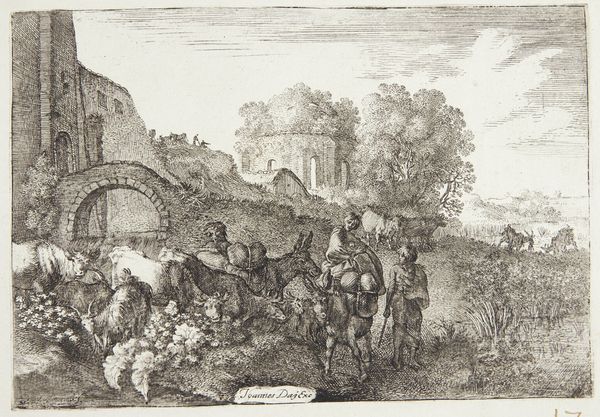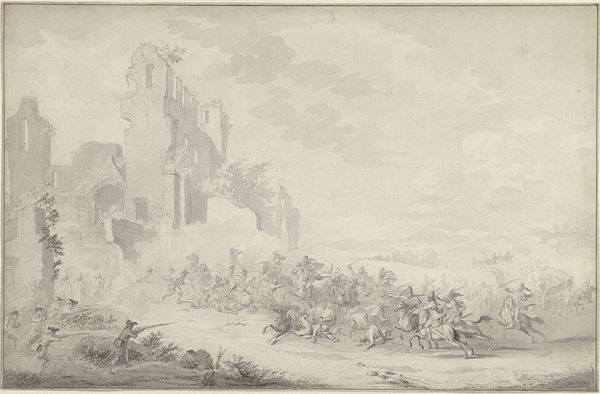
Flock of Goats near a Ruin c. 18th century
Copyright: CC0 1.0
Curator: This is Cornelis Ploos van Amstel's "Flock of Goats near a Ruin." Van Amstel was born in 1726. Editor: It’s a tranquil scene. The muted tones and the crumbling archway give a sense of timelessness. Curator: Pastoral scenes like this were popular, idealizing rural life but also subtly reinforcing existing social hierarchies through land ownership and labor. Editor: Absolutely. The shepherd and his flock represent the working class, but they're also romanticized, obscuring the realities of their lives. The ruin perhaps symbolizes the fleeting nature of empires. Curator: Indeed. And consider how the image itself functions—as a reminder of a certain idealized past for a specific kind of elite audience. Editor: It makes you think about who gets to define "culture" and whose stories are told and retold. Curator: Precisely. A reminder that art is never neutral. Editor: And history is always contested.
Comments
No comments
Be the first to comment and join the conversation on the ultimate creative platform.
